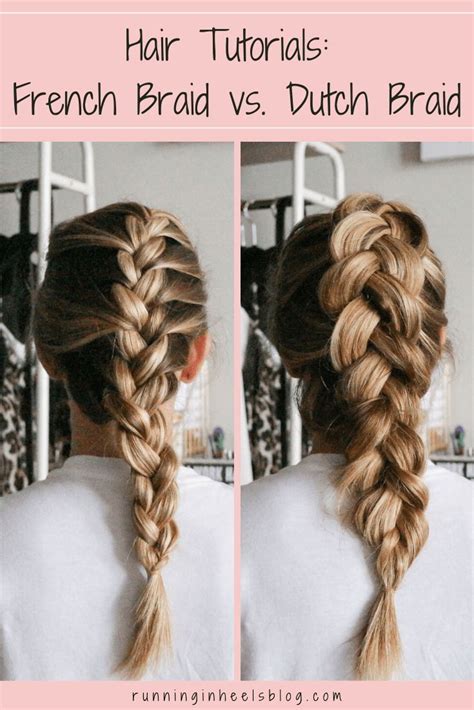Introduction
Braiding, an ancient art form, has been an integral part of various cultures worldwide. Two iconic braiding techniques, French braids and Dutch braids, stand out for their versatility, elegance, and timeless appeal. This comprehensive guide delves into the nuances of French vs. Dutch braids, providing detailed instructions, comparisons, and inspiration.

French Braid: A Classic with a Twist
French braids, also known as lace braids, are a classic braiding technique characterized by a three-strand braid that is woven into the hair from the crown to the nape of the neck. The strands are crossed over each other, creating a raised, intricate pattern that adds volume and texture to the hair. French braids can be intricate or casual, making them suitable for a wide range of occasions.
Instructions for French Braiding:
- Prepare Your Hair: Brush your hair thoroughly to remove any tangles or knots.
- Section Off the Top: Separate a small section of hair from the top of your head.
- Divide into Three Strands: Divide the section into three equal strands.
- Cross the Right Strand Over the Middle: Cross the right strand over the middle strand so that it becomes the new middle strand.
- Add Hair from the Side: Pick up a small section of hair from the right side and add it to the right strand.
- Cross the Left Strand Over: Cross the left strand over the new middle strand so that it becomes the new middle strand.
- Add Hair from the Side: Pick up a small section of hair from the left side and add it to the left strand.
- Continue Braiding: Repeat steps 4-7, adding hair from the sides and crossing the strands over each other, until you reach the nape of your neck.
- Secure the Braid: Tie off the end of the braid with a hair elastic.
Dutch Braid: A Bold and Braided Twist
Dutch braids, also known as inverted French braids, are similar to French braids but with a distinct difference in the crossing pattern. Instead of crossing the strands over each other, Dutch braids involve crossing them underneath each other, creating a raised, embossed effect. Dutch braids add volume and drama to the hair, making them ideal for special occasions or when you want to make a statement.
Instructions for Dutch Braiding:
- Prepare Your Hair: Brush your hair thoroughly to remove any tangles or knots.
- Section Off the Top: Separate a small section of hair from the top of your head.
- Divide into Three Strands: Divide the section into three equal strands.
- Cross the Right Strand Under the Middle: Cross the right strand under the middle strand so that it becomes the new middle strand.
- Add Hair from the Side: Pick up a small section of hair from the right side and add it to the right strand.
- Cross the Left Strand Under: Cross the left strand under the new middle strand so that it becomes the new middle strand.
- Add Hair from the Side: Pick up a small section of hair from the left side and add it to the left strand.
- Continue Braiding: Repeat steps 4-7, adding hair from the sides and crossing the strands under each other, until you reach the nape of your neck.
- Secure the Braid: Tie off the end of the braid with a hair elastic.
Comparison of French and Dutch Braids
| Feature | French Braid | Dutch Braid |
|---|---|---|
| Crossing Pattern | Strands crossed over each other | Strands crossed under each other |
| Effect | Raised, intricate pattern | Raised, embossed effect |
| Volume | Adds volume | Adds more volume |
| Suitability | Versatile for various occasions | Ideal for special occasions or making a statement |
Creative Applications of French and Dutch Braids
Beyond traditional hairstyles, French and Dutch braids can be creatively integrated into various applications. Here are some innovative ideas:
- Braided Headbands: Create a braided headband by braiding a French or Dutch braid along your hairline, securing it with bobby pins.
- Crown Braids: Add a touch of royalty to your look by braiding a French or Dutch braid around the crown of your head.
- Braid-Wrapped Buns: Enhance a classic bun by wrapping a French or Dutch braid around it, creating a unique and elegant style.
- Braided Updos: Elevate your updos by incorporating French or Dutch braids into them, adding texture and visual interest.
Conclusion
French and Dutch braids are versatile and timeless braiding techniques that add beauty and style to your hair. Whether you prefer the intricate charm of French braids or the bold statement of Dutch braids, both offer endless possibilities for creativity and self-expression. Embrace the art of braiding and experiment with these iconic styles to enhance your personal style and make a lasting impression.
